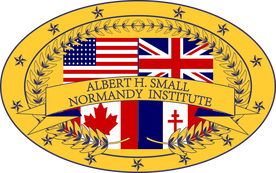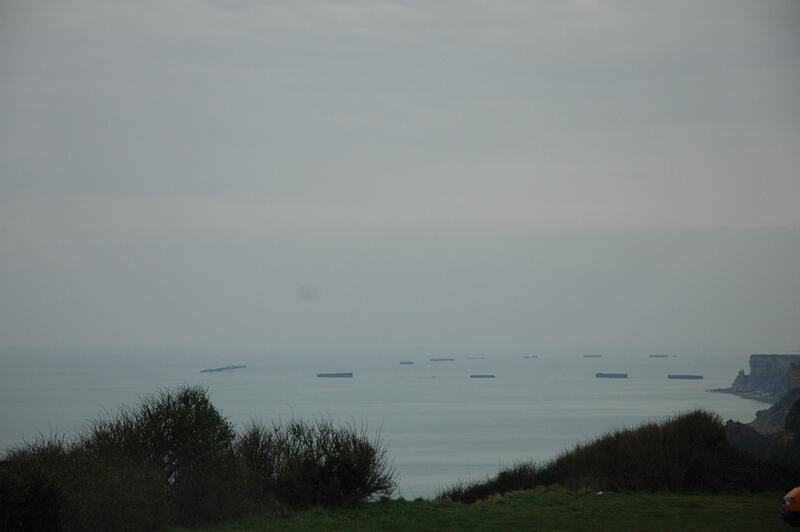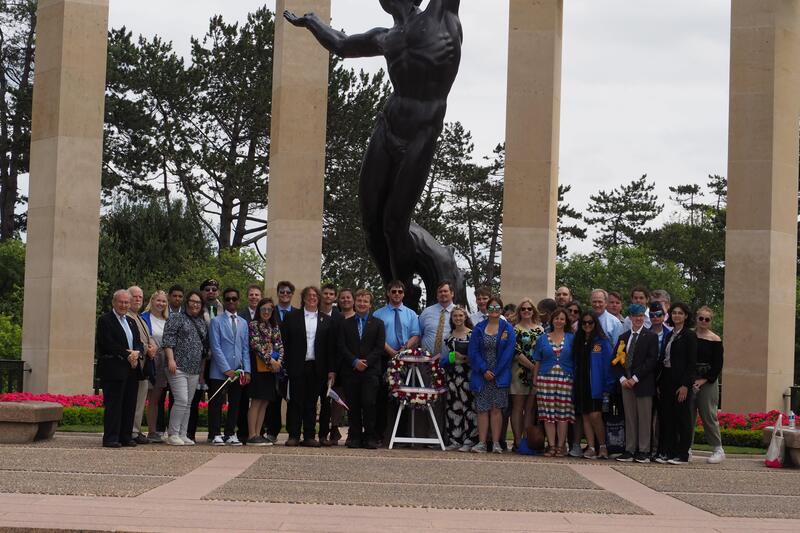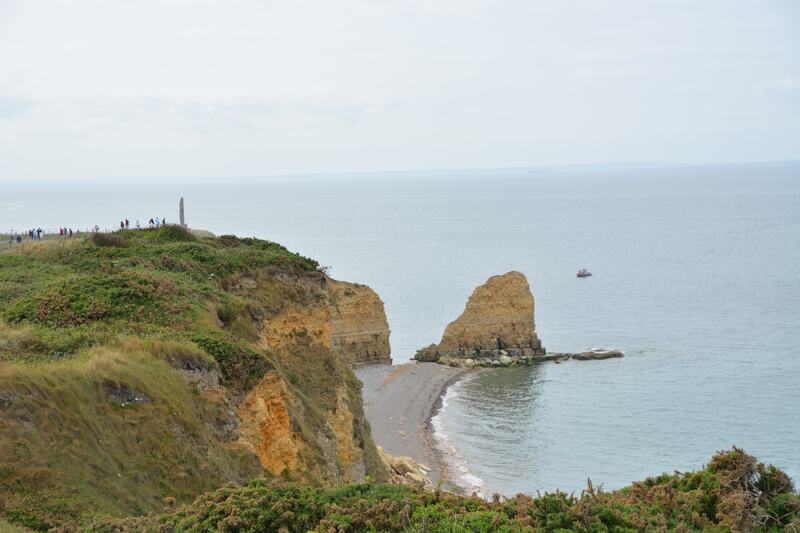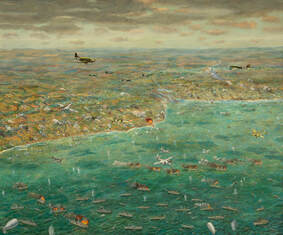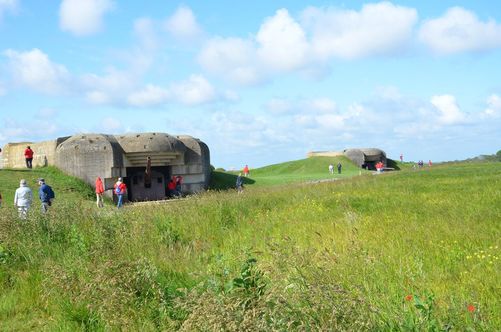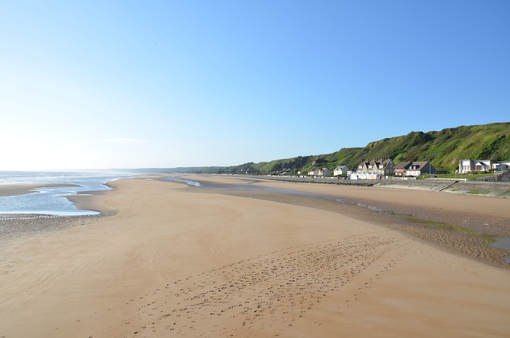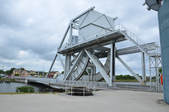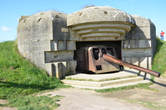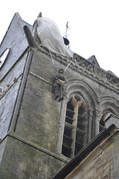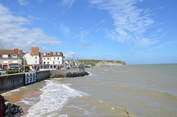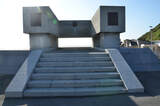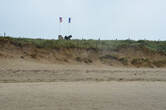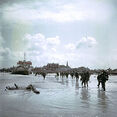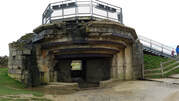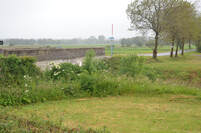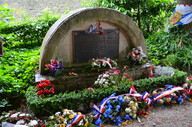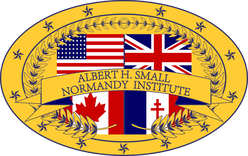Program Overview
Program Mission
|
The mission of The Albert H. Small Normandy Institute is to preserve and disseminate the important message that "Freedom is not Free" to young people and the future generations. By teaching about D-Day to younger people, the Institute aims to project Mr. Albert H. Small's vision to a growing number of people. |
Important Dates
- September 1, 2023: Applications Open
- December 1, 2023: Applications Close
- Mid-December 2023: Applicants will be Notified
- January 17, 2024: Online Bi-Weekly Discussions Begin
- June 18, 2024: Teams Arrive in Washington, DC
- June 23, 2024: Teams Depart for France
- June 30, 2024: Teams Arrive back in Washington, DC via Washington Dulles Airport
Institute Overview
The Albert H. Small Normandy Institute accepts 15 student-teacher teams for an intensive study of the Normandy Campaign of 1944. Upon acceptance, the Institute Members will be sent a set of books that will make up the majority of assigned readings for the class. Members will be registered with the George Washington University Office of Non-Degree Students to get access to Blackboard -- an online platform -- where assignments, other readings, recorded lectures, and updates will be posted.
Starting on January 17, 2024, all Institute Members and Staff will meet over Zoom, usually bi-weekly, to discuss readings and lecture topics. Each week will have assigned readings and an online lecture. Discussions will follow questions generated by student-teacher teams with assistance from Institute Staff who are professors, employees, or students of the George Washington University. While participating in these online discussions and lectures, student-teacher teams will begin working on the two primary projects of the Institute.
The first major project is a briefing paper. The team will choose from a list of topics about the Normandy Campaign and become the class expert on the subject. During our time in France, students will present to the rest of the Institute participants what they have learned about the topic. Some of these topics include: the landings on Omaha and Utah Beach, the landing of the 2nd Ranger Battalion at Pointe du Hoc, and other similar topics.
The second project is the core piece of the Normandy Institute. Each student-teacher team will identify a soldier from or near their hometown who is buried in the Normandy American Cemetery at Colleville-sur-Mer. Throughout the semester, the teams will work with archival documents -- including online census records, draft cards, enlistment records, letters, school yearbooks, and other sources -- to piece together the life of the soldier. Each team will compile the information they learned into a biography of their soldier that, once completed, will be given to the American Battle Monuments Commission to be held in the archives at the Normandy American Cemetery. On the Institutes' last day in Normandy, students will present a eulogy for the soldier they have studied written from the information they compiled for their biography. In the Normandy American Cemetery there are gravesites of 9,388 men and women and 1,557 names inscribed onto the Walls of the Missing, all of whom gave their lives on D-Day or in the following days and months. Before the establishment of the Institute in 2011, according to the Cemetery Superintendent, they only had biographical accounts of about 600 of the soldiers. The Institute has been able to preserve the stories of over 175 soldiers -- all of whom put aside their hopes and dreams when their country called them to serve.
On June 18, 2024, after 5 months of in-depth study about the Normandy Campaign and its broader historical contexts, the student-teacher teams will travel to Washington, DC. The teams will stay in dorms on the George Washington University campus and visit historical and cultural sites, attend lectures, and engage in discussion. Some of the visits include a trip to the National Archives in College Park, MD to work with archival documents, a wreath-laying at the Tomb of the Unknown Soldier at Arlington National Cemetery, and a visit to the United States Holocaust Memorial Museum. Institute members will hear from experts in their field about topics like the American homefront, the experience of African-American soldiers and civilians during the war, the nature and modern impact of the WWII War Crimes Trials, the fall of France, the French Resistance, and much more.
Following a 5-day stay in Washington, DC, the Institute participants will board a plane to France. Upon landing, we travel by bus directly to Normandy where the Institute members will conduct their "staff-ride" of the campaign. We will spend about a week exploring the region and visiting many of the sites we have been studying. Members will have the opportunity to walk on Omaha and Utah Beach, explore a number of German bunkers, and visit other battle sites, cemeteries, and historical museums before spending a final day in Paris. At the completion of the trip, Institute participants will fly back to Washington, DC where the student-teacher teams will return to their hometowns, finish their biographies, and share their experiences with friends, family, and community.
Starting on January 17, 2024, all Institute Members and Staff will meet over Zoom, usually bi-weekly, to discuss readings and lecture topics. Each week will have assigned readings and an online lecture. Discussions will follow questions generated by student-teacher teams with assistance from Institute Staff who are professors, employees, or students of the George Washington University. While participating in these online discussions and lectures, student-teacher teams will begin working on the two primary projects of the Institute.
The first major project is a briefing paper. The team will choose from a list of topics about the Normandy Campaign and become the class expert on the subject. During our time in France, students will present to the rest of the Institute participants what they have learned about the topic. Some of these topics include: the landings on Omaha and Utah Beach, the landing of the 2nd Ranger Battalion at Pointe du Hoc, and other similar topics.
The second project is the core piece of the Normandy Institute. Each student-teacher team will identify a soldier from or near their hometown who is buried in the Normandy American Cemetery at Colleville-sur-Mer. Throughout the semester, the teams will work with archival documents -- including online census records, draft cards, enlistment records, letters, school yearbooks, and other sources -- to piece together the life of the soldier. Each team will compile the information they learned into a biography of their soldier that, once completed, will be given to the American Battle Monuments Commission to be held in the archives at the Normandy American Cemetery. On the Institutes' last day in Normandy, students will present a eulogy for the soldier they have studied written from the information they compiled for their biography. In the Normandy American Cemetery there are gravesites of 9,388 men and women and 1,557 names inscribed onto the Walls of the Missing, all of whom gave their lives on D-Day or in the following days and months. Before the establishment of the Institute in 2011, according to the Cemetery Superintendent, they only had biographical accounts of about 600 of the soldiers. The Institute has been able to preserve the stories of over 175 soldiers -- all of whom put aside their hopes and dreams when their country called them to serve.
On June 18, 2024, after 5 months of in-depth study about the Normandy Campaign and its broader historical contexts, the student-teacher teams will travel to Washington, DC. The teams will stay in dorms on the George Washington University campus and visit historical and cultural sites, attend lectures, and engage in discussion. Some of the visits include a trip to the National Archives in College Park, MD to work with archival documents, a wreath-laying at the Tomb of the Unknown Soldier at Arlington National Cemetery, and a visit to the United States Holocaust Memorial Museum. Institute members will hear from experts in their field about topics like the American homefront, the experience of African-American soldiers and civilians during the war, the nature and modern impact of the WWII War Crimes Trials, the fall of France, the French Resistance, and much more.
Following a 5-day stay in Washington, DC, the Institute participants will board a plane to France. Upon landing, we travel by bus directly to Normandy where the Institute members will conduct their "staff-ride" of the campaign. We will spend about a week exploring the region and visiting many of the sites we have been studying. Members will have the opportunity to walk on Omaha and Utah Beach, explore a number of German bunkers, and visit other battle sites, cemeteries, and historical museums before spending a final day in Paris. At the completion of the trip, Institute participants will fly back to Washington, DC where the student-teacher teams will return to their hometowns, finish their biographies, and share their experiences with friends, family, and community.
Important Information
Cost: The Institute will pay for all course materials (assigned readings), lodging (double occupancy), transportation within D.C. and France, airline tickets to and from France, and meals. Each institute member is eligible for $300 of reimbursement for flights to and from Washington, DC. All other travel expenses (including passports, travel insurance, etc.) are the responsibility of the individual Institute members. The funding of this Institute is made possible by the incredibly generous contributions from Mr. Albert H. Small and his family foundation, The Albert and Shirley Small Family Foundation.
Requirements: All members must be able to stand for an hour as well as walk significant distances (up to 2 miles) over sandy, rocky, or hilly terrain in various weather conditions.
Conditions: The Institute is a non-smoking, tobacco-free event. Due to the travel constraints, family members cannot accompany the trip.
Questions? Contact Us!
Requirements: All members must be able to stand for an hour as well as walk significant distances (up to 2 miles) over sandy, rocky, or hilly terrain in various weather conditions.
Conditions: The Institute is a non-smoking, tobacco-free event. Due to the travel constraints, family members cannot accompany the trip.
Questions? Contact Us!
Activities in Washington, DC
Washington D.C. is a big place, and there is no way we can take you to every site we would like to in just a week. Institute Members will have some free time to explore places in Washington, DC as well as visit other sites with the Institute as a whole. These places are subject to change year to year, but may include the Albert H. Small Washingtoniana Collection, the Marine Barracks for an Evening Parade, and the Eisenhower Memorial, among others.
Activities in France
|
Pegasus Bridge
Just after midnight on June 6, 1944, three British gliders from the 6th Airborne Division landed under the cover of darkness and captured a critical bridge over the Orne River and Caen Canal, firing the first shots of Operation Overlord. They held the bridge all night, holding off heavy assaults until they were relieved the next morning. Longues-Sur-Mer Batterie
While the Atlantic Wall was broken in a day, many remnants of it still dot the Norman coast. Longues-Sur-Mer holds many such remnants: four concrete casemates protecting rusted 152-mm naval guns, a command post, and multiple pillboxes. Sainte Mere Eglise
During the paratrooper assault on D-Day, the 82nd Airborne was tasked with taking this strategically important town. Unfortunately, in the mass confusion in the early morning hours, much of the 82nd was dropped right on the town, resulting in heavy casualties. One of the most unique monuments to the fallen is in Sainte Mere Eglise today: a (mannequin) paratrooper hanging from the church steeple. Arromanches Harbor and Gold Beach
After the landings, the Allied forces had to figure out their supply lines with no available port. The answer was to build two Mulberry Harbors -- an artificial harbor that could match the capacity of the port at Dover. Remnants of the British Harbor (Mulberry B) remains at Arromanches, while Mulberry A off of Omaha was destroyed in a storm in June 1944. Vierville Draw, Omaha Beach
Off the Dog Green Sector, the Vierville Draw was one of the few places Americans could get off of Omaha Beach. The Germans knew this and had heavily fortified the area making the battle to get off of Omaha brutal for the Americans. This sector is represented in the opening scene of Saving Private Ryan (1998). Utah Beach
One of two American beaches, the 4th and 90th Infantry Divisions landed on Utah Beach. Though the tide pushed the landing craft a mile off course, the landing was a major success. Juno Beach and Canada House
Canadian forces landed at Juno Beach at 7:35 on June 6th, near the village of Bernieres-sur-Mer. The landing was a success and one of the first French house liberated by Allied Forces on the beach still stands, known as Canada House. Pointe du Hoc
Believed to be a critical German artillery position between Omaha and Utah Beach, the 2nd Ranger Battalion scaled the cliffs on D-Day to take the position. They learned that the artillery had been moved away from Pointe du Hoc before their arrival. La Fiere Bridge
Despite being a small, nondescript bridge, the flooding of the Merderet River made this a critical access way to Utah Beach. It was a highly contested area between German forces and the 82nd Airborne Division. Abbaye d'Ardenne
This was the site of the massacre of twenty Canadian prisoners by the infamous 12th SS Panzer Division, known as the Hitlerjugend. This unit, originally called the Baby Legion by the Wehrmacht due to most recruits being drawn from the Hitler Youth, soon earned a much more sinister moniker: The Murder Legion. |
